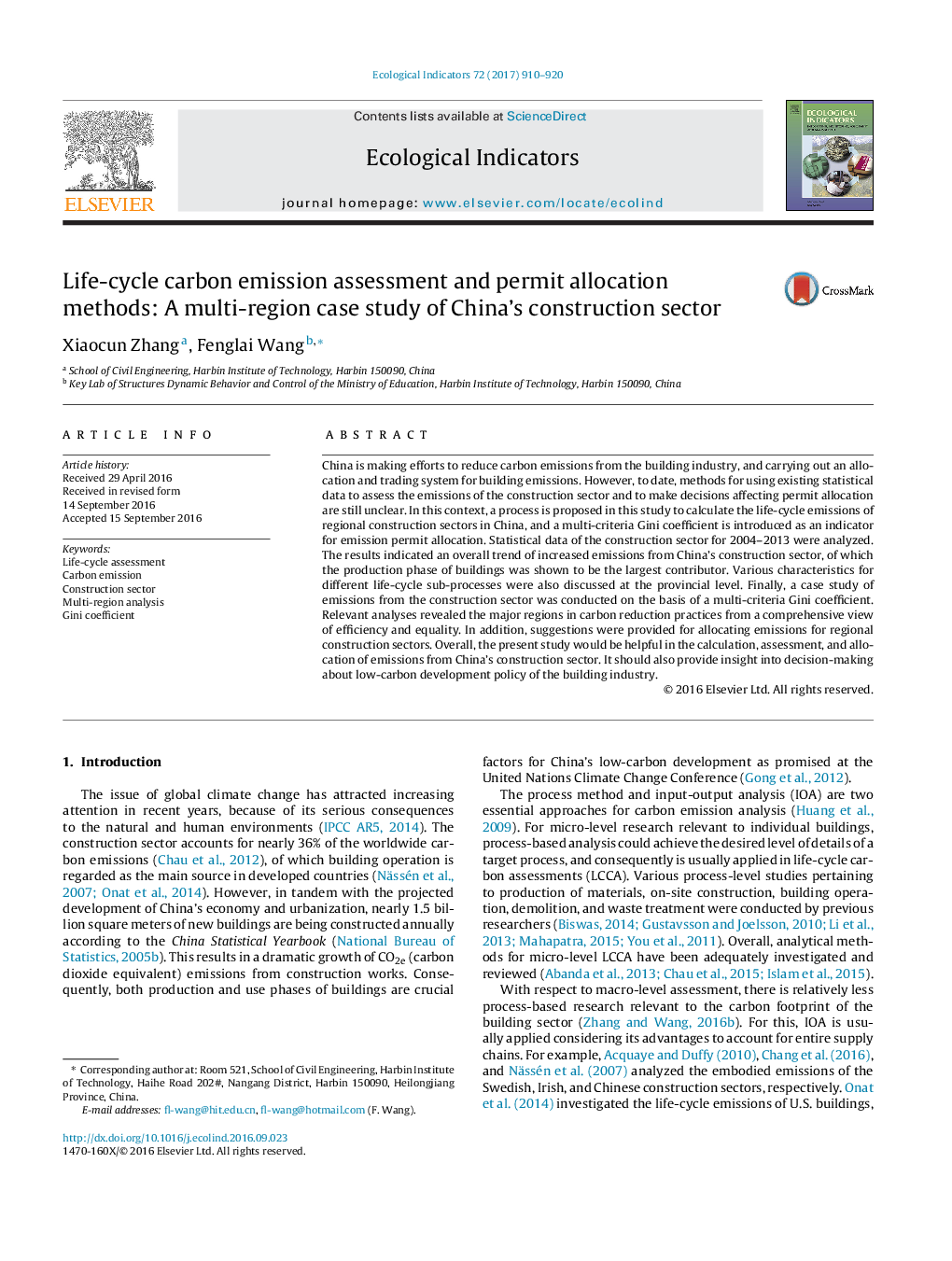| Article ID | Journal | Published Year | Pages | File Type |
|---|---|---|---|---|
| 6292891 | Ecological Indicators | 2017 | 11 Pages |
Abstract
China is making efforts to reduce carbon emissions from the building industry, and carrying out an allocation and trading system for building emissions. However, to date, methods for using existing statistical data to assess the emissions of the construction sector and to make decisions affecting permit allocation are still unclear. In this context, a process is proposed in this study to calculate the life-cycle emissions of regional construction sectors in China, and a multi-criteria Gini coefficient is introduced as an indicator for emission permit allocation. Statistical data of the construction sector for 2004-2013 were analyzed. The results indicated an overall trend of increased emissions from China's construction sector, of which the production phase of buildings was shown to be the largest contributor. Various characteristics for different life-cycle sub-processes were also discussed at the provincial level. Finally, a case study of emissions from the construction sector was conducted on the basis of a multi-criteria Gini coefficient. Relevant analyses revealed the major regions in carbon reduction practices from a comprehensive view of efficiency and equality. In addition, suggestions were provided for allocating emissions for regional construction sectors. Overall, the present study would be helpful in the calculation, assessment, and allocation of emissions from China's construction sector. It should also provide insight into decision-making about low-carbon development policy of the building industry.
Related Topics
Life Sciences
Agricultural and Biological Sciences
Ecology, Evolution, Behavior and Systematics
Authors
Xiaocun Zhang, Fenglai Wang,
